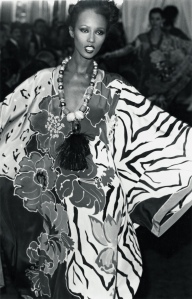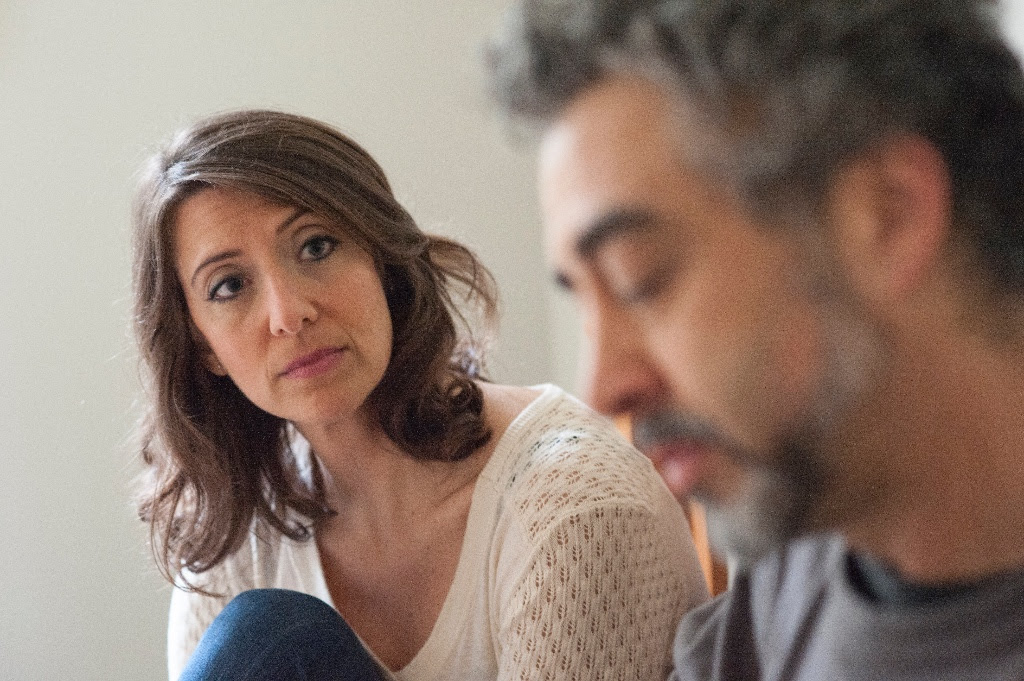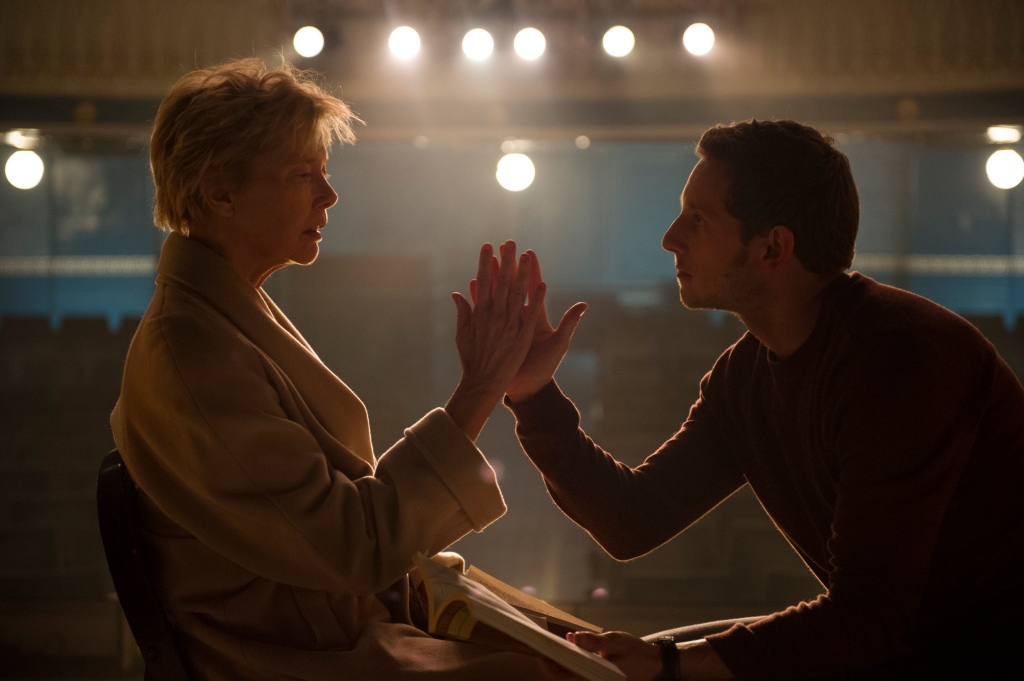The Palm Beach pink-bannered Oscar de la Renta exhibition, currently on view at San Francisco’s de Young Museum, is but the latest in a series of the museum’s “blockbuster” fashion shows held in the below-ground special exhibition hall. Oscar de la Renta: The Retrospective includes day and evening pieces from his many decades’ experience as a couturier of the old school; the list of his mentors, colleagues and bosses reads like the who’s who of fashion: Pierre Balmain, Cristobál Balenciaga, Elizabeth Arden, and Lanvin. His passing in 2014 signaled for many the end of a particular era of couture, as he managed a certain level of autonomy and authority at a time when couture became rarer and fashion “cycles” became more frequent and fragmented, dictated not by tastemakers or magazine editors, but social media mavens.
While most special and traveling exhibitions at the de Young are shown in the gloom of the downstairs galleries, it was still notable that yet another fashion exhibition ended up downstairs. In the documentary First Monday in May, which briefly covers the making of the Metropolitan Museum of Art’s 2015 “blockbuster” fashion exhibition, China: Through The Looking Glass, much notice is paid to the exhibition expanding to the upstairs galleries. One narrative strand of the film is devoted to the fact that fashion is literally relegated to the bottom rung of the museum ladder. While there are practical reasons for these shows to be downstairs, in softly-lit and carefully-conditioned galleries which are gentle to the fabrics and passementerie, it is suggested, by many in the film, that fashion is not traditionally considered a “serious” art from, hence its place in the museum.

In First Monday in May (directed by documentarian Andrew Rossi) Metropolitan Museum of Art curators Harold Koda and Andrew Bolton, with the support of fashion and other art/design professionals, notably Anna Wintour, the editor of American Vogue, Hongkong filmmaker Wong Kar Wai (himself a visual purveyor of cheongsams) and Australian filmmaker Baz Luhrmann, fight for the China exhibit to expand to the upstairs galleries of Asian Art. The surface argument is that the exhibition, which “explores the impact of Chinese aesthetics on Western fashion,” should juxtapose those Western pieces with Eastern works of art (in this case, Ming jars, lacquered screens, paintings, and more), so that this “impact” can be fully understood. The other argument, of course, is that fashion should be given the same consideration as other art forms and therefore should be displayed in the upper floors. Snippets of tense discussions between the fashion curators and Maxwell Hearn, the head of the Asian Art department, reveal a tension between competing curatorial and programmatic points of view (the latter feels that fashion will detract from the depth and breadth of the museum’s impressive Asian art collection). Meanwhile, back at the de Young, de la Renta’s couture pieces are artfully arrayed, grouped according to the myriad influences of his long career, from the black and lace-clad dancers of Sevilla to the flowers of his famed gardens in Kent, Connecticut. Like in the Met exhibit, fine and decorative art pieces from the museum’s collection flank evening gowns, 1970s caftans and Marie Antoinette-influenced dresses, in an attempt to, again, demonstrate the “impact” of these influences on Mr. de la Renta’s designs.
Whether or not fashion is art and therefore belongs in a museum is a matter of opinion. I, for instance, support Karl Lagerfeld’s assertion in the film that fashion is an applied art. However, if fashion creators, documenters, and curators want us to regard fashion with serious consideration as we do with fine art, it is imperative that the work is also presented seriously. The film, perhaps inadvertently, shows us more of the caprices and foibles of fashion people rather than carefully documenting and presenting the philosophical, academic, or mission-oriented considerations behind the China show. How does this show support the institution’s mission, for instance? The film is edited such that we most memorably see unflattering and un-stimulating snippets of Andrew Bolton arguing his way out of Orientalism with his colleagues in China and with Maxwell Hearn, and the Western designers briefly (and sometimes glibly) asserting their fascination with pre-1949 China. It would have been more interesting and challenging for the film to delve further into the Costume Institute’s place within the Metropolitan, or why this particular exhibition was mounted at this particular time, or why the fashion blockbuster show has become an inevitable part of a museum’s season. The film feels superficial in content and incomplete in its editing. By association, the portrayal of the exhibition feels more like yet another exercise in fantasy-making rather than a purposeful and novel insight into the ways in which the aesthetics of one culture can influence another.

Similarly, the Oscar de la Renta show’s exhibition design did not support the stature, elegance, or longevity of de la Renta’s career. The juxtaposition of museum pieces with the clothing detracted rather than supported the work; de la Renta’s influences were so direct and clear in his designs that we did not need paintings, chairs, or any other objéts to understand his point of view. The industrial grey platforms on which some of the mannequins were mounted seem to have been recycled from a previous show and bounced unflattering glare onto the details. The last gallery, a black and mirrored long hall meant to echo the glamour of a red-carpet parade, felt more like downtown New York than the Upper East Side, where many of de la Renta’s clients resided. The exhibition might have been more appropriately held in the elegant austerity of the de Young’s sister museum, the Palace of Fine Arts, whose verdant lawns and Beaux-Arts architecture would have been ample background for the designer’s exquisitely cut and detailed dresses and a nod to the designer’s particular milieu. Additionally there were no accompanying materials of de la Renta’s design process. Rather than museum pieces, sketches, correspondence, photographs of a de la Renta-clad Laura Bush, or even photographs of the designer working in his atelier, juxtaposed with the clothing, would have provided some useful and interesting background and context (these images are relegated to the website). The quality and boldness of one of the caftans, for instance, would have been more apparent paired with an enlarged photograph of the model Iman, wearing it regally (this photograph is on a museum shop postcard). de la Renta was a man who believed in the French concept of a métier; he was serious not just about haute couture but also about its presentation. We can see from his designs what his influences were; we do not need curatorial guidance for that. We look for a deeper story, an illustration of the design process from inspiration to finished hem.

The elevation of the art of fashion within a museum context is in many ways a response to the “democratization” of fashion and to the long-overdue attention which should be paid to influential and ground-breaking designers. Relatively speaking, the preservation, exhibition, and academic consideration of fashion is a younger practice compared to more established departments of European painting, decorative arts, etc. Perhaps a little more time, patience, and rigor on the part of fashion makers and curators are needed to make its place more upstairs than downstairs in the pantheon of art-going.





Leave a comment